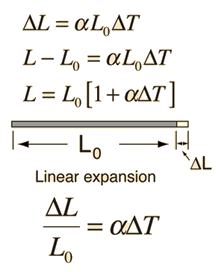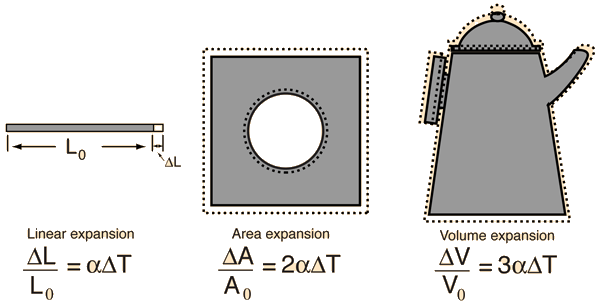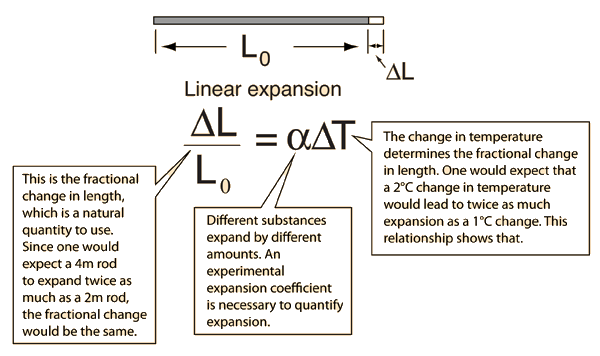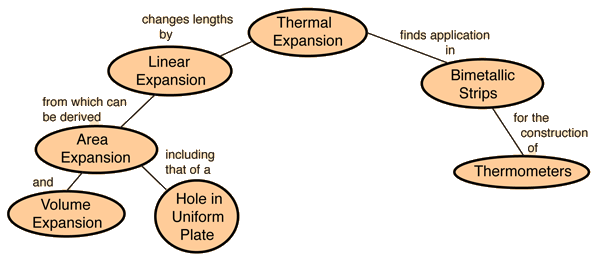Linear Expansion
Over small temperature ranges, the fractional thermal expansion of uniform linear objects is proportional the the temperature change. This fact can be used to construct thermometers based on the expansion of a thin tube of mercury or alcohol. Several equivalent forms of the relationship find use. The calculation is set up in the form
Common forms
 |
Note: This calculation is set up with default values corresponding to heating a 10 meter bar of steel by 20 °C. Any of the values may be changed. The final calculation is done by clicking on the quantity you wish to calculate in the active expression above.

|
|
Index
Alcohol thermometer Wiki |




